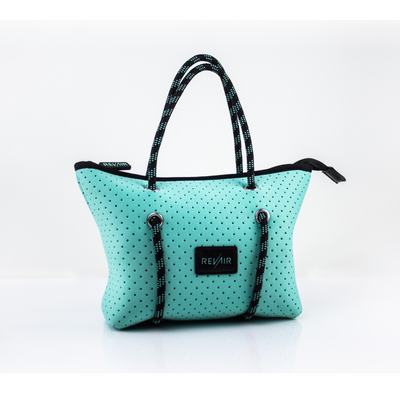
Humidity-Proof Your Curls: Summer Hair Tips You Need
When Summer Hits, So Does the Frizz
If summer weather has you dodging mirrors and fighting with your twist-outs, you’re not alone. For curly and coily hair, humidity often means unwanted volume, halo frizz, puffiness, and style shrinkage—especially after all the time spent moisturizing, defining, and styling.
But here’s the good news: frizz is not a life sentence. Understanding how humidity affects textured hair—and taking steps to protect it—can turn a frizzy mess into a defined, hydrated masterpiece.
So What Is Humidity Doing to My Hair?
Let’s break it down: humidity is the presence of moisture in the air. When it’s hot and sticky outside, the air is full of water molecules looking for a dry place to land—and unfortunately, dry or porous hair is a perfect target.

Curly hair is naturally more porous, which means the cuticle (outer layer of the strand) has more gaps and raised scales that allow moisture in. When humid air hits, that extra water swells the hair shaft, disrupts your curl pattern, and causes the strands to lift, frizz, and tangle.
Science Fact: Hair swells when it absorbs moisture from the air, and curly textures swell unevenly due to bends and twists in the strand. That’s why frizz is more noticeable in curly and coily hair than in straight or wavy textures.
Humidity-Proofing 101: What Actually Works
We’ve separated fact from fluff to bring you a real plan that supports curl health and frizz control... without relying on harsh products or overly complicated routines.
1. Moisturize Like You Mean It
Frizz often starts with dryness. When your hair lacks moisture, it tries to pull water from the air - resulting in swelling, poofing, and lost definition.

How to do it right:
- Use a rich, sulfate-free shampoo to cleanse without stripping natural oils.
- Follow with a deep conditioner once per week to restore elasticity and softness.
- Look for humectants like aloe vera and panthenol that hydrate - but use glycerin carefully (more on that below).
- Apply a leave-in product to damp hair after washing to seal in moisture and create a foundation for styling.
Pro Tip: Focus moisture application on the mid-shaft and ends of your hair. These areas are the oldest and driest, and they’re also the most likely to puff in humid weather.
Looking for a product line specifically designed to hydrate textured hair and lock in moisture? Explore the RevAir Extreme Hydration Collection - formulated with coconut water, hyaluronic acid, and olive leaf extract to help curls stay soft, juicy, and resilient all summer long.
2. Seal It In to Lock Moisture Out
Once you’ve moisturized, your next job is to seal the cuticle and prevent humid air from penetrating the hair shaft.

How to seal like a pro:
- Apply the LCO (Leave-In, Cream, Oil) or LOC method, layering lightweight products in the right order.
- Choose oils like grapeseed, sweet almond, or jojoba that provide flexible hold without greasiness.
- Finish with an anti-humidity spray or styling cream to lock everything in place.
Note: When humidity levels are sky-high, products rich in glycerin can sometimes backfire by pulling too much moisture into the hair. Opt for humectant-free or humidity-resistant formulas during very humid months.
Want to find out which layering method is best for your hair type? Take a closer look at LCO vs. LOC: Which Method Is Right for Your Hair? from Hair.com.
3. Smooth the Cuticle with Low Heat or Gentle Tension
If your cuticle is left open after moisturizing, humid air will sneak in. The trick is to gently close the cuticle—without frying your hair.

Safe cuticle-smoothing strategies:
- Use a cool or warm setting on a low-tension dryer (like RevAir’s Reverse-Air Dryer) to encourage cuticle closure.
- Wrap your curls in a satin scarf at night to protect the cuticle from friction and prevent overnight frizz.
- Finish conditioning sessions with a cool water rinse to naturally tighten the hair’s surface.
Accessory Tip: Protect your freshly styled hair with a satin wrap or silk scrunchies to minimize moisture loss and friction during sleep.
If you haven’t yet tried a low-tension drying method, RevAir’s Reverse-Air technology gently stretches and dries hair while smoothing the cuticle—a game-changer during frizz season.
4. Keep Your Styling Routine Light and Clean
It’s tempting to pile on products to "fight" frizz, but heavy layering can make things worse when temperatures rise.

Simplify your lineup:
- Stick to a core set of products: a leave-in, a cream, an oil, and a gel or custard (if needed).
- Choose lightweight, humidity-proof formulas to avoid buildup or sticky residue.
- Avoid cocktailing too many products together—if they don’t blend well, you'll get flakes, tackiness, or greasy curls.
Less really is more when the air itself is already heavy with moisture.
5. Choose Styles That Play Nicely with Humidity
Trying to force bone-straight, super-defined styles during high humidity often leads to frustration. Instead, embrace low-manipulation looks that thrive in summer conditions.

Top humidity-friendly styles:
- Flat Twists – Smooth the roots while tucking ends away.
- Chunky Rope Twists or Jumbo Braids – Fewer sections mean fewer frizz-prone seams.
- High Puffs and Low Buns – Quick, cute, and breathable for sweaty scalps.
- Braided Crowns and Halo Styles – Protect your strands and look effortlessly chic.
Need fresh style ideas? Explore Byrdie's 42 Humidity-Proof Hairstyles to Wear All Season Long for inspiration.
Dew Point > Temperature
When it comes to predicting how your hair will behave, the dew point matters more than the thermometer.
Quick Dew Point Cheat Sheet:
- 🧊 Below 35°F → Hair feels dry and brittle — use humectants.
- 🌥️ 35–60°F → Balanced moisture — layer light leave-ins and creams.
- 🔥 Above 60°F → High humidity risk — minimize humectants and double down on sealing.
For a more detailed look, check out NaturallyCurly’s Guide to Dew Point and Hair Care.
Bonus Tip: Check the Frizz Forecast Before You Style
Want to stay one step ahead of the weather?
Use an online frizz predictor, such as FrizzBot, or an app like Frizz - Hair Forecast, to get a personalized hair forecast based on your local humidity, dew point, and temperature.
Knowing your daily hair conditions can help you pick the right products, styles, and techniques before you even step outside.
Turn Frizz Into Feedback

When your hair reacts to humidity, it’s sending you a message. Listen to your strands: give them hydration, sealing, gentle styling, and protection.
And remember, with the right products and techniques, your curls can stay poppin'—even in the thickest, stickiest summer air.
Ready to build your best humidity-proof routine? Explore RevAir’s full collection of curl-protective accessories and haircare essentials.














